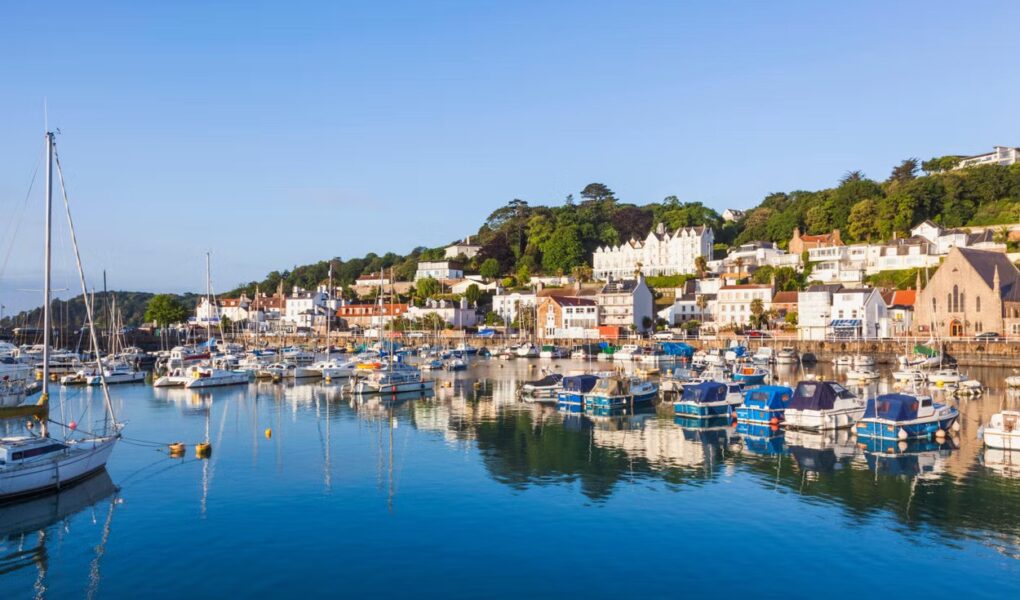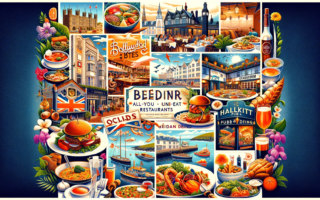Nestled in the English Channel, just 14 miles from the coast of France, lies the enchanting island of Jersey. Although often overshadowed by its larger neighbours, this island has a charm and allure that captivates anyone on its shores. While Jersey is geographically small, it’s a place that offers a rich tapestry of history, culture, and natural beauty, making it a significant and unique part of the UK.
Geography and Size: Small But Mighty
Jersey is the largest of the Channel Islands, a group of islands in the English Channel. But don’t let the term “largest” mislead you—the island is only about 9 miles long and 5 miles wide, covering a total area of approximately 46 square miles (118 square kilometres). To put that into perspective, Jersey is roughly half the size of Washington, D.C., or about 70 times smaller than London.
Despite its modest size, Jersey is densely packed with diverse landscapes. From its rugged cliffs and sandy beaches to its rolling countryside and quaint villages, the island offers a surprising variety of scenery. The compact nature of Jersey means that you’re never far from the sea, and you can easily explore the entire island in a day or two, making it a perfect destination for a weekend getaway.
Population and Governance: A Unique Status
Jersey’s population is around 110,000, making it one of Europe’s most densely populated places. The island’s capital, St. Helier, is home to about a third of its residents and serves as its economic and cultural hub.
While Jersey is not part of the United Kingdom, it is a Crown Dependency, which means it has a special relationship with the UK. Jersey has its own government, legal system, and currency but relies on the UK for defence and international representation. This unique status allows Jersey to maintain a high degree of autonomy while benefiting from the protection and support of the UK.
History and Culture: A Rich Tapestry
Jersey’s history is as rich and varied as its landscapes. The island has been inhabited for thousands of years, with evidence of human settlement dating back to the Neolithic period. Over the centuries, its strategic location between England and France has shaped it, and it has been the site of numerous battles and invasions.
The island’s history is evident in its many historic sites, including ancient dolmens, medieval castles, and WWII fortifications. Mont Orgueil Castle, perched on a hill overlooking the picturesque fishing village of Gorey, is one of the island’s most iconic landmarks. The castle has stood guard over Jersey for over 800 years and offers visitors a fascinating glimpse into the island’s past.
Culturally, Jersey is a blend of British and French influences with a distinct identity. The island has a dialect of the Norman language, Jèrriais, which many residents still speak. Jersey’s cultural calendar is filled with events and festivals celebrating its unique heritage, from the Battle of Flowers, one of Europe’s largest floral festivals, to the annual Liberation Day celebrations, commemorating the island’s liberation from German occupation during WWII.
Economy: More Than Just Finance
Jersey is perhaps best known for its financial services industry, which is a significant driver of the island’s economy. Thanks to its favourable tax regime and well-regulated financial sector, Jersey has become a global financial centre, attracting businesses and investors worldwide.
However, there is much more to Jersey’s economy than finance. The island has a thriving tourism industry, with visitors drawn to its stunning landscapes, historic sites, and vibrant culture. Jersey’s mild climate and beautiful beaches make it a popular destination for outdoor activities such as hiking, cycling, and watersports.
Agriculture also plays an important role in Jersey’s economy. The island is famous for its dairy industry and the iconic Jersey cow. Jersey Royals, a type of potato unique to the island, are another of its agricultural treasures and are exported around the world.
Environment and Conservation: Protecting Natural Beauty
Jersey’s small size and dense population make environmental conservation a priority. The island is home to various flora and fauna, including several rare or endangered species. Its coastal waters are rich in marine life, and its wetlands and nature reserves provide important habitats for birds and other wildlife.
Conservation efforts in Jersey are spearheaded by organizations such as the National Trust for Jersey and the Durrell Wildlife Conservation Trust, founded by the renowned naturalist Gerald Durrell. The Durrell Wildlife Park, located in the heart of the island, is home to various endangered species and is a leading centre for conservation and breeding programs.
Conclusion: A Small Island with a Big Heart
Jersey may be small in size, but it’s big. From its stunning landscapes and rich history to its vibrant culture and thriving economy, Jersey punches well above its weight. Whether you’re exploring its ancient castles, relaxing on its beautiful beaches, or enjoying its world-class cuisine, Jersey offers a wealth of experiences that are as diverse and captivating as the island itself.
So, how big is Jersey? Physically, it may be tiny, but in every other sense, this island is truly larger than life.



